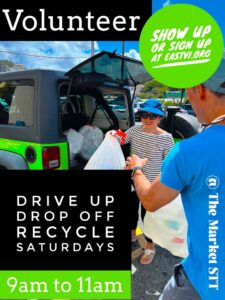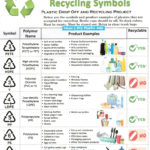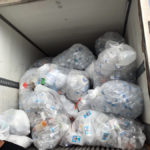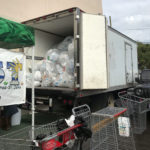 Please be advised that the Environmental Association
Please be advised that the Environmental Association
St. Thomas St. John (EAST) and other community organizations including the Green Team, the VI Conservation Society, We Grow Food Inc. and Mendez Recycling collect single use plastics and aluminum cans on Saturday mornings at Plaza Extra Tutu.
We wish to thank Plaza Extra for their commitment and support of our efforts to recycle in the VI, we could not do this without them.
Special thanks to our volunteers for helping us recycle over 100 tons of plastic and 30 tons of aluminum cans which since our inception in September 2018, did not end up in our overburdened landfill.
Please do your part and reduce your use of single use plastics and we look forward seeing our committed volunteers again and users of the program as soon as conditions change regarding crowd spacing and the related CONVID-19 health concerns.
Hopefully the government of the Virgin Islands will have a similar recycling and waste reduction program in place before the restart of the program.
Be healthy, safe and please reduce your dependency on single use plastics as much as possible!
Please be a volunteer or circulate electronically this volunteer poster and help us spread the word for the need of recycling volunteers!








